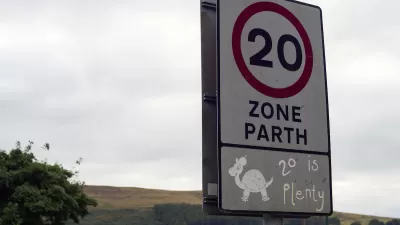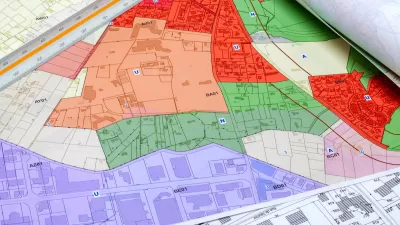Reducing the speed limit to 50 mph, say researchers, would create the tipping point where taking transit or modes other than driving will become more attractive and therefore save CO2 emissions.
Also, it turns out that driving slower reduces emissions.
From Wired: "The faster you go, the more fuel you burn because wind resistance increases exponentially. Lowering your speed by 5 mph when traveling at 35 to 45 mph will boost fuel economy as much as 10 percent (.pdf), according to a report the General Accounting Office prepared in 2008."
Treehugger takes the Wired article a step further, presenting six reasons why slowing down is beneficial. For one:
"It could save a lot of fuel. Some estimates indicate up to 5%; In 1983, by which time many people were ignoring it, it saved 2.5 billion gallons of gasoline and diesel, or 2.2% of the total fuel used. Oil was a horrible $ 20 per barrel. Wired notes that "The Department of Energy noted in 2008 that lowering the national speed limit to 55 mph would save 175,000 to 275,000 barrels of oil daily."
FULL STORY: Slow Down and Spare the Planet

Alabama: Trump Terminates Settlements for Black Communities Harmed By Raw Sewage
Trump deemed the landmark civil rights agreement “illegal DEI and environmental justice policy.”

Planetizen Federal Action Tracker
A weekly monitor of how Trump’s orders and actions are impacting planners and planning in America.

The 120 Year Old Tiny Home Villages That Sheltered San Francisco’s Earthquake Refugees
More than a century ago, San Francisco mobilized to house thousands of residents displaced by the 1906 earthquake. Could their strategy offer a model for the present?

Indy Neighborhood Group Builds Temporary Multi-Use Path
Community members, aided in part by funding from the city, repurposed a vehicle lane to create a protected bike and pedestrian path for the summer season.

Congestion Pricing Drops Holland Tunnel Delays by 65 Percent
New York City’s contentious tolling program has yielded improved traffic and roughly $100 million in revenue for the MTA.

In Both Crashes and Crime, Public Transportation is Far Safer than Driving
Contrary to popular assumptions, public transportation has far lower crash and crime rates than automobile travel. For safer communities, improve and encourage transit travel.
Urban Design for Planners 1: Software Tools
This six-course series explores essential urban design concepts using open source software and equips planners with the tools they need to participate fully in the urban design process.
Planning for Universal Design
Learn the tools for implementing Universal Design in planning regulations.
Clanton & Associates, Inc.
Jessamine County Fiscal Court
Institute for Housing and Urban Development Studies (IHS)
City of Grandview
Harvard GSD Executive Education
Toledo-Lucas County Plan Commissions
Salt Lake City
NYU Wagner Graduate School of Public Service





























